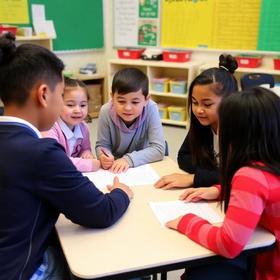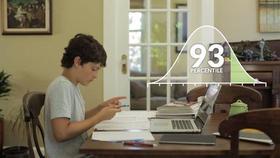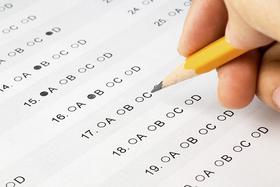Why Private School? (2025 Edition)
The question of how to educate a child remains one of the most consequential decisions a parent can make. In 2025, families continue to weigh the tradeoffs between public and private education—considering factors such as tuition, class size, teaching style, values, and long-term outcomes.
Public schools educate the majority of children in the United States, but for many families, private schools provide unique advantages worth the investment. While tuition for private schools averages $15,000 to $35,000 annually for day schools and $65,000 to $75,000 for boarding schools, according to the National Association of Independent Schools (NAIS), families increasingly see the costs as an investment in future opportunities.
So why private school in 2025? Let’s explore the defining benefits.
A Higher Academic Bar
A defining advantage of private schools is their reputation for academic rigor. Private schools typically set higher graduation requirements than public schools and encourage deeper engagement across core subjects.
For example, many private high schools require four years of math, science, and foreign language, while some public schools mandate only two or three. Community service, arts participation, and capstone projects are also frequently built into graduation requirements.
“Private schools create an environment where learning is expected, not optional,” notes Dr. Sarah Lim, Director of College Counseling at a New England prep school. “That culture of high standards fosters motivation and resilience.”
Recent data supports this. The 2023 National Assessment of Educational Progress (NAEP) reported that students in private schools scored above the national average across reading, math, and writing at grades four, eight, and twelve. This achievement gap underscores how expectations translate into measurable performance.
Individualized Attention: The Student-Teacher Ratio
Another hallmark of private schools is small class size. The average private school class in 2025 remains 12–15 students, compared to public school averages of 25 or more, according to the U.S. Department of Education.
Smaller settings allow for:
Personalized instruction—teachers can adapt lessons to individual learning styles.
Stronger relationships—students develop mentoring bonds with faculty.
Confidence-building participation—children are more likely to speak up in smaller groups.
“When my son transferred from a public school of 28 students per class to a private school with 12, his confidence soared,” explains Mrs. Jackson, a parent in Los Angeles. “He’s no longer just a face in the crowd.”
Small communities also allow teachers to notice and address challenges early, preventing small gaps from becoming long-term obstacles.
Rich Exposure to the Arts
Because private schools design their own curricula, they often prioritize programs in the arts and humanities. This flexibility allows schools to expand offerings in music, theater, dance, and visual arts—areas that are often underfunded in public systems.
Private high schools across the country stage full-scale musicals, run photography and film programs, and offer electives in digital design and animation. Some even partner with local museums and professional theaters, giving students access to real-world opportunities.
“Arts aren’t an afterthought here—they’re integral,” says Marcus Young, Arts Director at a Midwestern private school. “Our students graduate with portfolios that impress colleges and employers alike.”
This emphasis also reflects the broader private school philosophy of educating the whole child, balancing academics with creativity, collaboration, and expression.
Enhanced Funding and Enrichment Opportunities
Private schools often enjoy greater flexibility in allocating funds, thanks to tuition revenue, endowments, and fundraising. This translates into unique enrichment opportunities such as:
International study programs (students may spend a semester abroad).
STEM labs with advanced technology such as robotics, AI, and biotech.
Field trips that connect directly to curriculum, from history tours in Washington, D.C., to marine biology studies in Hawaii.
Student-run clubs and initiatives, often funded by the school to encourage leadership.
A 2025 Forbes report highlighted that many elite private schools are investing heavily in experiential learning programs that simulate real-world challenges, from entrepreneurship incubators to climate research projects.
Preparation for College and Beyond
The majority of private schools are college preparatory by design. This means not only that academics are rigorous but also that the school culture fosters ambition and support for higher education.
According to the Wall Street Journal, private school graduates are significantly more likely to complete a bachelor’s degree by their mid-20s compared to peers from public schools. Private schools achieve this by embedding college readiness into daily life:
Dedicated college counseling offices with individualized guidance.
SAT/ACT prep integrated into coursework (though many schools now also emphasize holistic college prep beyond testing).
Advanced Placement (AP) and International Baccalaureate (IB) programs.
Career exploration and alumni mentorship that expand students’ horizons.
Parents often find this focus reassuring. “From sophomore year onward, my daughter’s school had her meeting with college advisors,” shares Mr. Patel, a New York parent. “By senior year, the application process felt manageable, not overwhelming.”
Character, Values, and Community Service
Beyond academics, private schools emphasize values-based education. Many uphold honor codes, emphasize respect, and incorporate community service requirements into graduation criteria.
Service learning projects are not only about giving back—they prepare students for active citizenship. Students volunteer at food banks, tutor younger children, or engage in environmental stewardship. These experiences build empathy and leadership while also strengthening college applications.
Private schools also tend to partner with parents more directly. Families often have a stronger voice in shaping school culture and policies compared to public school systems.
Discipline and Safety
Safety remains a top priority for families choosing private education. With smaller communities and strong disciplinary frameworks, private schools often report fewer instances of bullying, violence, and vandalism compared to public schools.
According to the most recent School Crime and Safety Report from the National Center for Education Statistics, students in private schools report fewer incidents of threats and hate-related graffiti than peers in public schools.
This emphasis on structure and accountability prepares students for the independence they will need in college and beyond.
Diversity and Inclusion in 2025
Private schools have become significantly more diverse in recent years. As of 2025, students of color represent roughly one-third of private school enrollment, and financial aid programs continue to expand access for middle-income families.
International student enrollment, which dropped during the pandemic, has rebounded, with steady growth from Asia, Europe, and Latin America. Many private schools now highlight global citizenship as a central part of their mission, ensuring graduates are prepared to thrive in an interconnected world.
The Financial Equation: Aid and Accessibility
For many parents, tuition is the deciding factor. While the sticker price can be intimidating, it’s important to understand the role of financial aid. Roughly 25% of students at NAIS member schools receive need-based aid, and average awards cover 40–45% of tuition. Some schools meet full demonstrated need, while others combine aid with merit scholarships.
Families should factor in hidden costs such as uniforms, transportation, and extracurricular fees. However, as Mrs. Grant, a Boston parent, explains: “We thought private school was out of reach. But the financial aid package made it possible—and the value has been extraordinary.”
Parents can explore resources through the U.S. Department of Education and independent school associations to better understand affordability.
Final Thoughts: Why Private School in 2025?
Private schools are not the right choice for every family, but for many, they offer unmatched advantages: academic rigor, small class sizes, rich arts programs, leadership opportunities, and a strong focus on values.
As Dr. Lim reminds us: “Parents shouldn’t see private school as simply buying better academics. It’s an investment in a community, a philosophy, and a pathway that shapes a child’s future.”
The decision requires research, reflection, and family conversations. For parents exploring next steps, articles like What to Research Before Choosing a Private School can provide helpful frameworks.
Ultimately, the answer to “Why private school?” in 2025 is about finding the right environme










